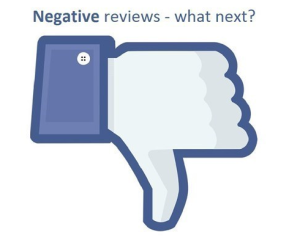
When it comes to achieving that coveted 1st position on search engine rankings, you know that search engine optimization (SEO) plays an important role. After all, SEO helps ensure that search engines properly index your website, thus ensuring your website is shown to the right people at the right time.
But beware: Not all SEO practices are created alike. In fact, there are some common but toxic SEO practices that could actually sink your site’s rank, making it less likely that potential customers will find you.
When SEO Hurts: 16 Common but Toxic On-Page Practices
Surprised that there are SEO practices out there that hurt, rather than help? They didn’t always start out that way; in fact, many toxic on-page practices were once crucial to boosting a site’s positioning in search engine rankings. However, search engines have become smarter over the years. Now Google, Yahoo!, and Bing aim to provide the best content possible to their users, which means that your SEO practices will need to reflect a better user experience.
Want to avoid the search engine black hole? Avoid these 16 common but toxic SEO practices:
1. Using thin content: If you’re copying and pasting content from page to page on your site, you’ll end up killing your search engine rankings. For example, if you’re using the same paragraph CTA on each page or using product descriptions that your supplier has provided hundreds of other sites, change up the content to improve your SEO rankings.
2. Refusing to be mobile-responsive: Not only is this bad news for your sales – more customers than ever are shopping with their smartphones – but many search engines will punish your site if it’s not mobile-responsive. Invest in working with a website designer who can create a mobile-friendly website, and watch as your SEO rankings skyrocket.
3. Over-optimizing your content: Back in the day, a common SEO practice was to stuff as many keywords as humanly possible into your site’s text. Search engines have become much smarter, as they realized plenty of websites did this without offering valuable content to users. Optimize your content, but don’t go overboard!
4. Using identical title tags: If you’re using the same title tags across multiple site pages, you’re missing out on the chance to capture more search engine traffic. Use specific and unique keywords for each page’s title tag to increase the odds of getting more visitors to your site.
5. Purchasing links: While many people are still getting away with this bad SEO practice, search engines are getting smarter about identifying natural linking, and when links have been purchased. If someone reports your site as spam, Google will manually review your website, which could quickly unveil your shady link-building strategy. I know, this isn’t technically and on-page issue, but we had to mention it as the ensuing penalty would affect ALL of your pages!
6. Using vague CTAs: If your button copy says “Click Here” or “Search Now”, you’re missing out on an opportunity to use your CTAs to rank your site. For example, if you’re an auto insurance broker, use “Search Auto Quotes Now” rather than a simple “Search Now” CTA.
7. Not optimizing your meta description: Like title tags, each page of your site has a meta description that can be optimized for better indexing. Avoid stuffing the description with keywords, as it needs to make sense to human readers as well as search engine crawlers.
8. Using irrelevant keywords: If one page on your site is dedicated to a keyword that is irrelevant to the rest of your site, you’re going to get penalized by search engines. Remember, relevancy is the most important ranking factor!
9. Purchasing One-Off Domains: This can be an excellent SEO strategy – but only when performed by the right hands. If you have dozens of one-off sites designed solely to point visitors back to your main page, you may get penalized by Google.
10. Using your competition as a keyword: If you’re hoping to get away with stealing some traffic from your competition, take note – search engines are on to you. Worse still: you could open yourself up to copyright lawsuits.
11. Speaking in “Spamglish”: If your site’s content doesn’t make sense simply because you’re stuffing as many keywords as possible in there, you’ll get penalized. Remember, search engines prioritize their users’ experiences with your site.
12. Using “doorway” pages: These webpages are exclusively designed just for search engines, rather than humans. Search engines frown on this practice, so make sure every page is useful to your site’s visitors.
13. Hijacking high-performance pages: Otherwise known as “pagejacking”, this refers to the practice of ripping off content from another high-performing site and using it on your own site. You won’t just get in trouble with search engines; you could also get in serious legal trouble.
14. Using poor guest posts: When done correctly, guest posts can be a great way to build credibility and recognition from search engines. However, if your guests are posting poor, irrelevant, or spammy content – just for the sake of a link back to their own site – your site will be the one that ends up getting penalized.
15. Placing too many ads above the fold: The fold is the part of the site page that’s visible without requiring any scrolling. If you have too many ads above this fold, you’ll be penalized by many search engines – especially by Google.
16. Having a slow site: Does your website take longer than five seconds to load? Guess what – that can count against your SEO ranking! Make sure you use a good hosting provider to ensure your site loads quickly and easily.
Have you ever worked with a company that used these dated and harmful tactics? Have you accidentally made one of these mistakes? Let us know in the comments below!
Digital & Social Articles on Business 2 Community(73)





